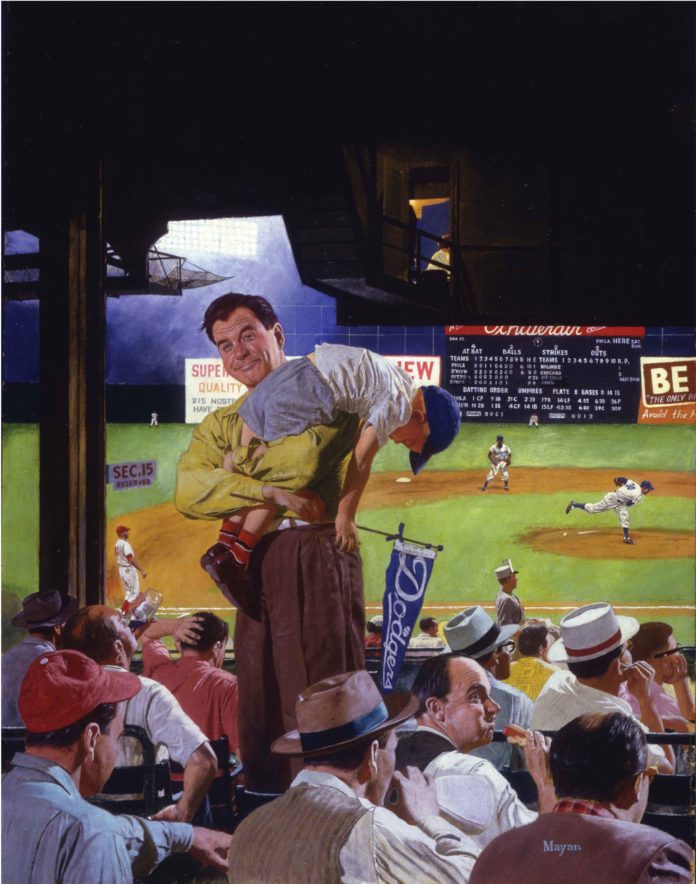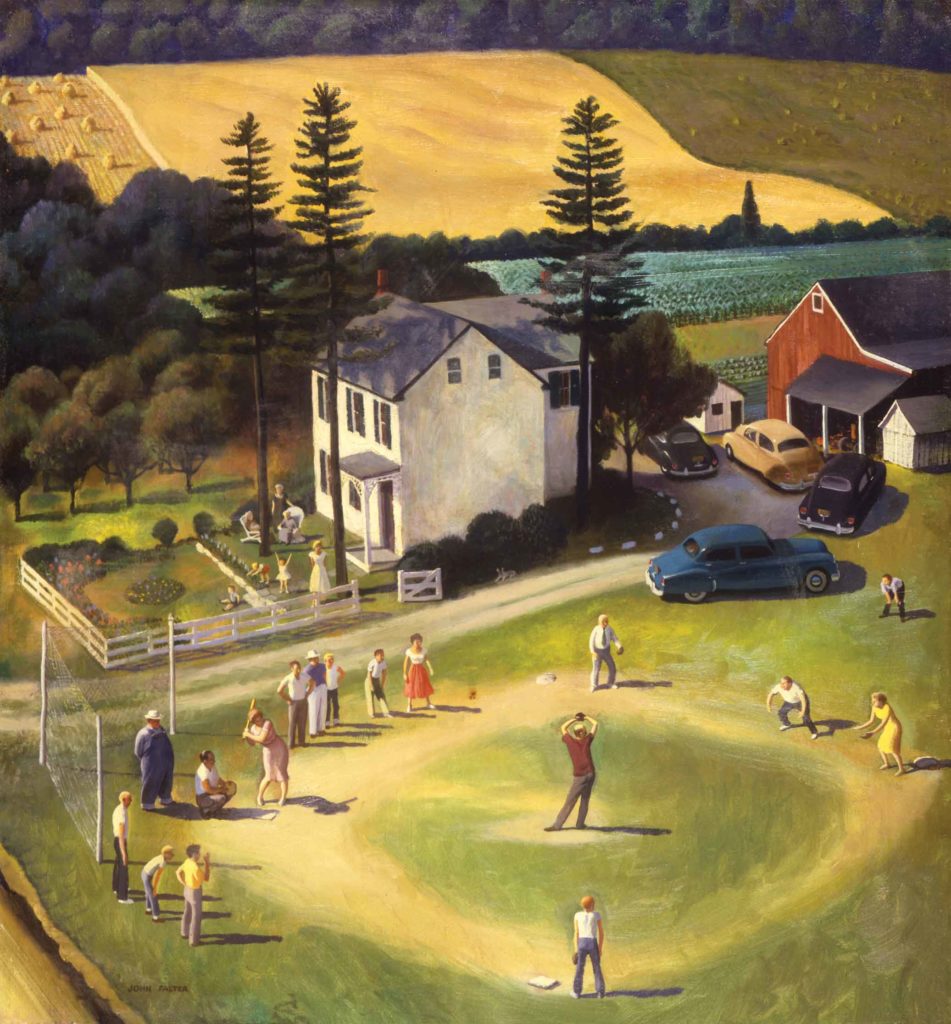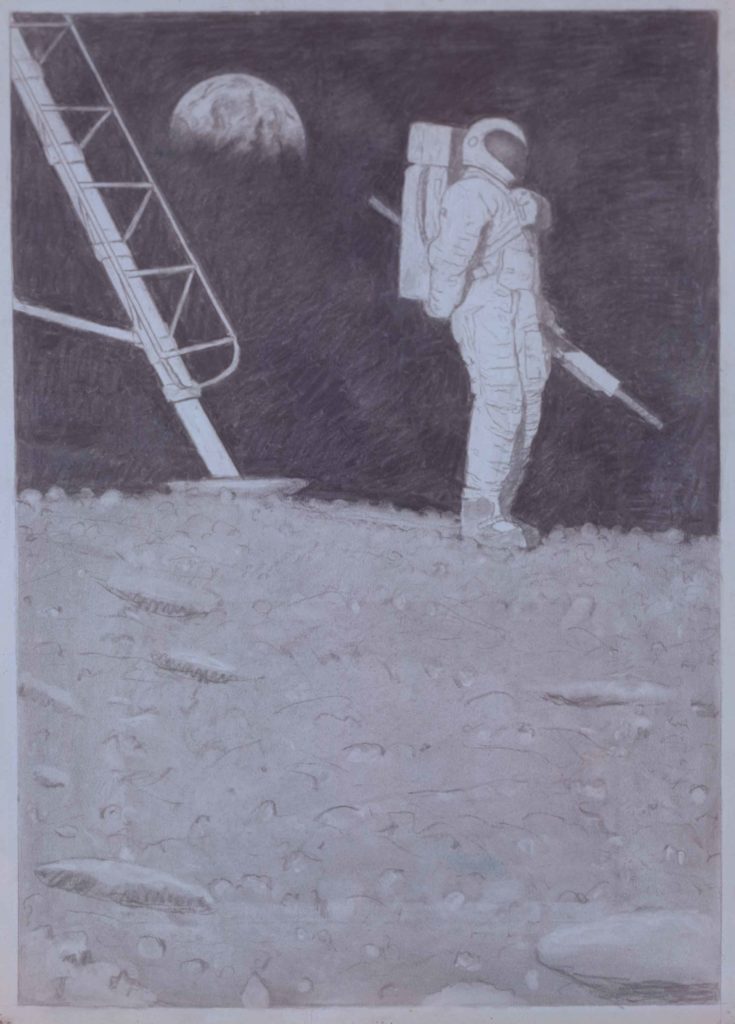
The National Museum of American Illustration (NMAI) in Newport, RI, is pleased to announce the debut of its newest exhibition, “Norman Rockwell & His Contemporaries: Fabulous Forties to Sensational Sixties,” culminating with a celebration of the 50th anniversary of the Apollo 11 Moon Landing on July 20, 1969.
The period from the 1940s through the 1960s was a tumultuous time in the history of the United States. Significant political and social changes defined daily life for Americans as a result of the frequent shift between wartime and peacetime. The Second World War (1939–1945), the Cold War (1947–1991), the Korean War (1950–1953), and the Vietnam War (1955–1975) made their marks on the culture of the United States and affected all aspects of life, beyond the political sphere.

During WWII, American men fought for the side of the Allies along with the Soviet Union, the United Kingdom, and China, while the opposition Axis powers consisted of Nazi Germany, Japan, and, initially, Italy. At the same time, American women experienced new-found freedom as they entered the workforce, taking on the jobs that men left behind. WWII influenced everyday life in innumerable ways for Americans of all ages. Stevan Dohanos highlights this effect on America’s youth in “Another War to Go,” illustrating a group of Boy Scouts as they practice parachuting in a hay loft, pretending to be soldiers.

When WWII ended, many of the veterans who returned home went back to work, got married, and started families. This ushered in the era of the 1950s nuclear family – a term for the stereotypical family consisting of a working husband, housewife, and typically two children. Images of leisure and wholesome family life prevailed in the fifties, such as John Falter’s “Family Picnic,” featuring the artist himself on the pitcher’s mound during a friendly game of baseball. While this period was often idealized, it was interrupted by both the Korean and Vietnam Wars and gave way to the social upheaval of the 1960s.

In the sixties, the Civil Rights and Women’s Rights Movements sought to overturn political policies and improve the daily lives of women and minorities. During this time, travel was booming, expanding the average American’s accessibility to the rest of the world. Richard Stone’s 1956 advertisement for American Airlines, “Welcome Home!,” epitomizes the types of campaigns airlines were commissioning to expand commercial air travel, highlighting the joys it can bring by reuniting families from afar with efficiency and safety.

While the 1950s and 1960s have been called the “Golden Age of Plane Travel,” it was also a momentous time of technological innovation that led to an American, Neil Armstrong, becoming the first person to set foot on the moon. To quote Armstrong, the Apollo 11 Moon Landing was “one small step for man, one giant leap for mankind.” Norman Rockwell depicted this moment in his studies for “The Final Impossibility: Man’s Tracks on the Moon,” created for Look magazine.

Featuring original paintings, works on paper, vintage posters, and accompanying artifacts, “Norman Rockwell & His Contemporaries: Fabulous Forties to Sensational Sixties,” highlights the changes to daily life in America during three very different decades. Through illustrations created for advertisements, magazines, newspapers, and more, artists showed how American culture and values changed in concert with the constant political unrest.
The exhibition is curated into three main focuses: War & Politics in the 1940s; Leisure, the Nuclear Family, & the Economy in the 1950s; and Civil Rights, Women’s Rights, Travel & Expansion in the 1960s. The culmination of the exhibition will be a spotlight on the Apollo 11 Moon Landing in 1969.
“Norman Rockwell & His Contemporaries: Fabulous Forties to Sensational Sixties” is on view at the National Museum of American Illustration (Rhode Island) through December 27, 2019.
Sign up to receive Fine Art Today, the free weekly e-newsletter from
Fine Art Connoisseur magazine.






